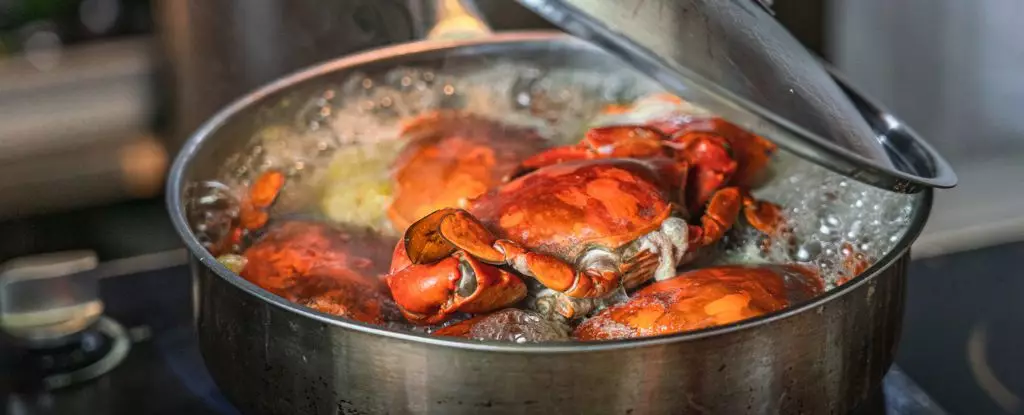The scientific community has a long-standing debate regarding the capacity for pain perception among non-vertebrate animals, particularly in crustaceans. Traditionally perceived as mere biological automatons, crustaceans such as shore crabs (Carcinus maenas) are slowly shifting from this reductive view thanks to new research findings. A recent study has provided groundbreaking evidence indicating that these creatures can not only react to pain but can do so in differentiated ways based on the nature and severity of their injuries. This emerging perspective invites a reevaluation of the ethical considerations surrounding the treatment of crustaceans, especially in culinary practices.
Pain Processing in Crabs: A Study Breakdown
Utilizing a technique analogous to an electroencephalogram (EEG), researchers monitored the neural activity of living shore crabs. This was achieved by placing electrodes on the crabs’ shells, allowing scientists to assess their pain responses under controlled conditions. The experiment involved applying varying levels of acetic acid to the crabs’ soft tissues—a method that replicates environmental stimuli that might cause distress or injury in these animals.
What transpired was remarkable; crabs demonstrated heightened electrical activity in their central nervous systems correlating with the concentration of the chemical applied. More intriguing was the difference in their brain activity in response to mechanical stimuli, suggesting a complex and nuanced processing of pain signals. The researchers established a compelling argument that crabs are not only capable of reacting to harmful stimuli but are also capable of a more conscious awareness of the pain that they are experiencing. This complexity indicates that their pain responses may not merely be reflexive but rather involve higher levels of processing that challenge preconceived notions of invertebrate sentience.
Despite the advancements in understanding crustacean pain perception, skepticism persists. Critics often argue that even simple organisms can exhibit reflexive responses to harmful stimuli, leading some to dismiss the findings on the grounds that these reactions could occur without conscious perception of pain. This debate underscores the necessity for a clearer understanding of what constitutes pain and consciousness in the animal kingdom.
The reasoning here lies within the distinction between automatic reflexes facilitated by the peripheral nervous system and the integration of these signals in a centralized nervous system, which is essential for conscious awareness. The ongoing research aims to clarify the nature of these responses, bridging the gap between instinctual reactions and cognitive interpretation of suffering.
As the scientific community builds a foundation for understanding crustacean pain, the moral implications of this research cannot be overlooked. The practices involved in preparing shellfish, where these creatures are often boiled or cut while still alive, raise profound ethical questions. With the growing evidence that crabs and potentially other crustaceans experience pain, there exists an urgent call for humane treatment in both fishing and culinary practices.
Biologist Lynne Sneddon from the University of Gothenburg argues for the exploration of less painful methods for harvesting and preparing shellfish, emphasizing that humanity bears a responsibility to mitigate suffering in animals we choose to consume. These findings urge consumers and fisheries alike to rethink how crustaceans are handled, advocating for a shift towards more considerate practices that align with the growing awareness of animal welfare.
As intriguing as the current findings are, they offer only a glimpse into the broader landscape of crustacean welfare and cognition. Following this pioneering research, further studies are essential to understand the full scope of pain perception across different crustacean species. This knowledge could not only help refine ethical harvesting methods but also pave the way for future policies aimed at ensuring humane treatment of these and other non-vertebrate species.
The veil of ignorance surrounding the pain experience of crustaceans is slowly lifting, revealing a more sensitive and aware realm of animal life than previously conceived. As researchers delve deeper, the obligation to act humanely and responsibly towards all sentient beings, irrespective of their external complexity, becomes ever more pressing.



Leave a Reply